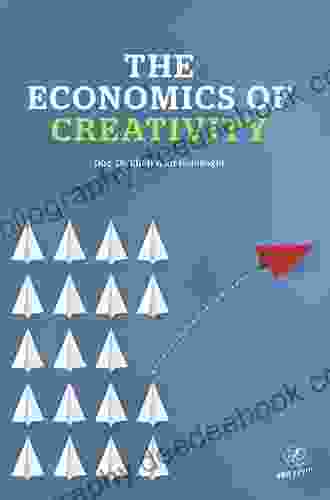Statistical Learning and Data Science: A Comprehensive Guide

Statistical learning and data science are two rapidly growing fields that are transforming the way we understand and interact with data. Statistical learning is the process of using statistical methods to learn from data, while data science is the process of using data to solve real-world problems.
This comprehensive guide will provide you with a deep understanding of the fundamental concepts, techniques, and applications of statistical learning and data science. You will learn how to collect, clean, and analyze data, and how to use statistical methods to build predictive models and make informed decisions.
Statistical learning is the process of using statistical methods to learn from data. Statistical methods can be used to:
5 out of 5
| Language | : | English |
| File size | : | 14328 KB |
| Screen Reader | : | Supported |
| Print length | : | 243 pages |
| Hardcover | : | 34 pages |
| Item Weight | : | 13.4 ounces |
| Dimensions | : | 8.5 x 0.25 x 11.02 inches |
- Descriptive statistics: Describe the data and draw s about the population from which the data was drawn.
- Inferential statistics: Make inferences about a population based on a sample of data.
- Predictive analytics: Use data to predict future events.
- Prescriptive analytics: Use data to make decisions about what actions to take.
Statistical learning is a powerful tool that can be used to solve a wide variety of problems. In this section, we will introduce the basic concepts of statistical learning and show you how to use statistical methods to solve real-world problems.
The first step in statistical learning is to collect data. Data can be collected from a variety of sources, including:
- Surveys: Surveys can be used to collect data from a large number of people.
- Experiments: Experiments can be used to test the effects of different treatments on a group of people.
- Observational studies: Observational studies can be used to collect data on a group of people over time.
When collecting data, it is important to consider the following:
- The purpose of the study: What do you want to learn from the data?
- The population you are interested in: Who do you want to learn about?
- The sample size: How many people do you need to collect data from?
- The data collection method: How will you collect the data?
Once you have collected data, you need to clean it. Data cleaning is the process of removing errors and inconsistencies from the data. Common data cleaning tasks include:
- Dealing with missing data: Missing data can be dealt with by deleting the rows with missing data, imputing the missing data, or creating a new variable to indicate that the data is missing.
- Dealing with outliers: Outliers are extreme values that can skew the results of your analysis. Outliers can be dealt with by removing them from the data, transforming the data, or creating a new variable to indicate that the data is an outlier.
- Dealing with duplicate data: Duplicate data can be dealt with by deleting the duplicate rows or by merging the duplicate rows.
Once you have cleaned your data, you can begin to analyze it. Data analysis is the process of exploring the data to identify patterns and relationships. Common data analysis tasks include:
- Descriptive statistics: Descriptive statistics can be used to summarize the data and draw s about the population from which the data was drawn.
- Inferential statistics: Inferential statistics can be used to make inferences about a population based on a sample of data.
- Predictive analytics: Predictive analytics can be used to use data to predict future events.
- Prescriptive analytics: Prescriptive analytics can be used to use data to make decisions about what actions to take.
Statistical learning models are algorithms that can be used to learn from data. Statistical learning models can be used to:
- Classify data: Classify data into different categories.
- Predict data: Predict the value of a variable based on other variables.
- Cluster data: Cluster data into groups of similar data points.
- Reduce dimensionality: Reduce the number of variables in a dataset.
There are many different types of statistical learning models, each with its own strengths and weaknesses. The choice of which statistical learning model to use depends on the task at hand.
Data science is the process of using data to solve real-world problems. Data science is a multidisciplinary field that draws on a variety of disciplines, including:
- Statistics: Statistics is the science of collecting, analyzing, and interpreting data.
- Computer science: Computer science is the study of computers and how they can be used to solve problems.
- Mathematics: Mathematics is the study of numbers, quantities, and structures.
- Business: Business is the study of how organizations operate and how they can be managed.
Data science is a rapidly growing field that is transforming the way we live and work. Data science is used in a wide variety of applications, including:
- Healthcare: Data science is used to improve healthcare outcomes by predicting patient risk, identifying fraudulent claims, and developing new drugs.
- Finance: Data science is used to manage risk, detect fraud, and develop new financial products.
- Marketing: Data science is used to target customers, develop new products and services, and measure the effectiveness of marketing campaigns.
- Manufacturing: Data science is used to improve efficiency, reduce waste, and predict demand.
Data science is a powerful tool that can be used to solve a wide variety of real-world problems. In this section, we will introduce the basic concepts of data science and show you how to use data science to solve real-world problems.
The data science process is a iterative process that consists of the following steps:
- Define the problem: What problem are you trying to solve?
- Collect data: What data do you need to solve the problem?
- Clean data: How do you clean the data to make it usable?
- Analyze data: How do you analyze the data to identify patterns and relationships?
- Build model: How do you build a statistical learning model to solve the problem?
- Evaluate model: How do you evaluate the performance of the statistical learning model?
- Deploy model: How do you deploy the statistical learning model to solve the problem?
The data science process is a iterative process that you may need to repeat several times before you find a solution to your problem.
There are a variety of tools available to help you perform data science tasks. These tools include:
- Programming languages: Programming languages are used to write the code that is used to perform data science tasks. Python and R are two of the most popular programming languages for data science.
- Data science libraries: Data science libraries are collections of functions that can be used to perform data science tasks. Scikit-learn and TensorFlow are two of the most popular data science libraries for Python.
- Data visualization tools: Data visualization tools are used to create visualizations of data. These visualizations can be used to explore the data and identify patterns and relationships. Matplotlib and Seaborn are two of the most popular data visualization tools for Python.
Data science is used in a wide variety of applications. Here are a few examples:
- Healthcare: Data science is used to improve healthcare outcomes by predicting patient risk, identifying fraudulent claims, and developing new drugs.
- Finance: Data science is used to manage risk, detect fraud, and develop new financial products.
- Marketing: Data science is used to target customers, develop new products and services, and measure the effectiveness of marketing campaigns.
- Manufacturing: Data science is used to improve efficiency, reduce waste, and predict demand.
Data science is a powerful tool that can be used to solve a wide variety of real-world problems. By understanding the basic concepts of data science and using the right tools, you can use data science to improve your business and your life.
Statistical learning and data science are two rapidly growing fields that are transforming the way we understand and interact with data. Statistical learning is the process of using statistical methods to learn from data, while data science is the process of using data to solve real-world problems.
This comprehensive guide has provided you with a deep understanding of the fundamental concepts, techniques, and applications of statistical learning and data science. You have learned how to collect, clean, and analyze
5 out of 5
| Language | : | English |
| File size | : | 14328 KB |
| Screen Reader | : | Supported |
| Print length | : | 243 pages |
| Hardcover | : | 34 pages |
| Item Weight | : | 13.4 ounces |
| Dimensions | : | 8.5 x 0.25 x 11.02 inches |
Do you want to contribute by writing guest posts on this blog?
Please contact us and send us a resume of previous articles that you have written.
 Book
Book Novel
Novel Text
Text Reader
Reader Library
Library Paperback
Paperback E-book
E-book Magazine
Magazine Paragraph
Paragraph Sentence
Sentence Bookmark
Bookmark Glossary
Glossary Bibliography
Bibliography Manuscript
Manuscript Scroll
Scroll Codex
Codex Bestseller
Bestseller Narrative
Narrative Autobiography
Autobiography Memoir
Memoir Reference
Reference Encyclopedia
Encyclopedia Narrator
Narrator Character
Character Catalog
Catalog Card Catalog
Card Catalog Archives
Archives Periodicals
Periodicals Study
Study Research
Research Scholarly
Scholarly Reserve
Reserve Academic
Academic Special Collections
Special Collections Study Group
Study Group Dissertation
Dissertation Reading List
Reading List Book Club
Book Club Theory
Theory Textbooks
Textbooks Blake Shelton
Blake Shelton Anil Sethi
Anil Sethi Liz Bowery
Liz Bowery Ben Dror Yemini
Ben Dror Yemini Regpub
Regpub Debra May Macleod
Debra May Macleod The History Hour
The History Hour Robert Snedden
Robert Snedden Naomi Mitchison
Naomi Mitchison Robert S Mueller
Robert S Mueller Angelica Morrone
Angelica Morrone Bob Greene
Bob Greene Anita Desai
Anita Desai Kryss Shane
Kryss Shane Kelly Barnhill
Kelly Barnhill Mike Barton
Mike Barton Burt Prelutsky
Burt Prelutsky Sasha Geffen
Sasha Geffen Angela M Smith
Angela M Smith Joe Wysong
Joe Wysong
Light bulbAdvertise smarter! Our strategic ad space ensures maximum exposure. Reserve your spot today!

 Deion SimmonsUnveiling the Dark, Sizzling Passion in "Ruthless King": An Enthralling Mafia...
Deion SimmonsUnveiling the Dark, Sizzling Passion in "Ruthless King": An Enthralling Mafia...
 Derrick HughesArt and Achievement Under Uncertainty: Exploring Creativity and Innovation in...
Derrick HughesArt and Achievement Under Uncertainty: Exploring Creativity and Innovation in... Ernesto SabatoFollow ·10.8k
Ernesto SabatoFollow ·10.8k Levi PowellFollow ·15.7k
Levi PowellFollow ·15.7k Alec HayesFollow ·11.8k
Alec HayesFollow ·11.8k Todd TurnerFollow ·4.4k
Todd TurnerFollow ·4.4k Emmett MitchellFollow ·12k
Emmett MitchellFollow ·12k Joseph ConradFollow ·3.9k
Joseph ConradFollow ·3.9k Foster HayesFollow ·6.2k
Foster HayesFollow ·6.2k Jared NelsonFollow ·13.8k
Jared NelsonFollow ·13.8k

 Braden Ward
Braden WardFeminism's Forgotten Fight: The Ongoing Battle for...
The feminist movement has historically...

 Julio Cortázar
Julio CortázarBlue Heaven Black Night: A Literary Journey Through Love,...
In the realm of...

 Eddie Bell
Eddie BellA Journey Through Time: Exploring the Enchanting World of...
The vibrant tapestry of New...

 Lawrence Bell
Lawrence BellValiance Dragon Soul Press Anthology: A Literary Odyssey...
Step into a realm where...

 Aron Cox
Aron CoxEmbark on a Creative Odyssey with Jean Leinhauser's "101...
Unveil a Kaleidoscope of...
5 out of 5
| Language | : | English |
| File size | : | 14328 KB |
| Screen Reader | : | Supported |
| Print length | : | 243 pages |
| Hardcover | : | 34 pages |
| Item Weight | : | 13.4 ounces |
| Dimensions | : | 8.5 x 0.25 x 11.02 inches |










